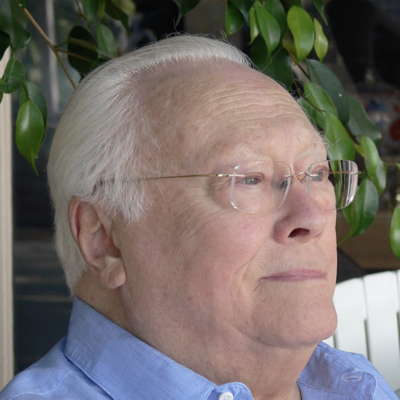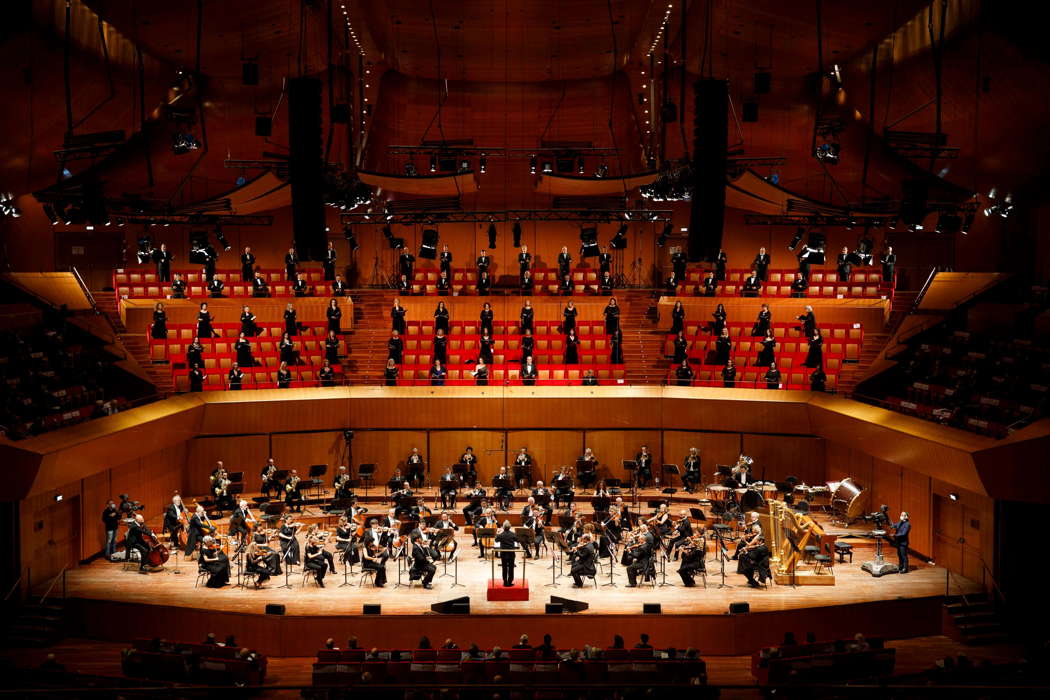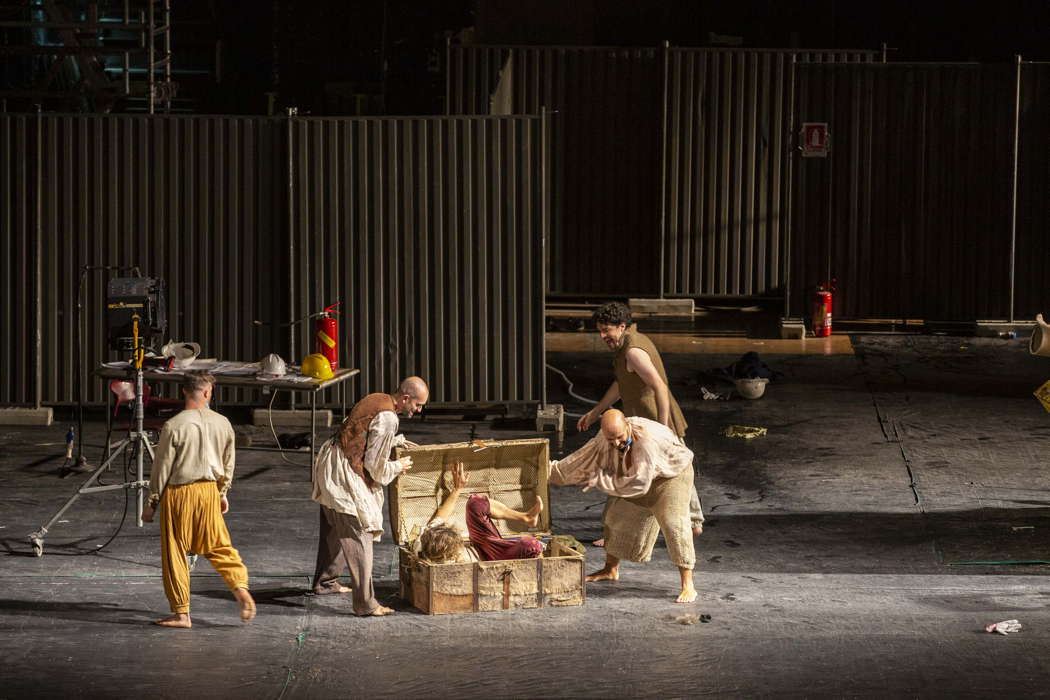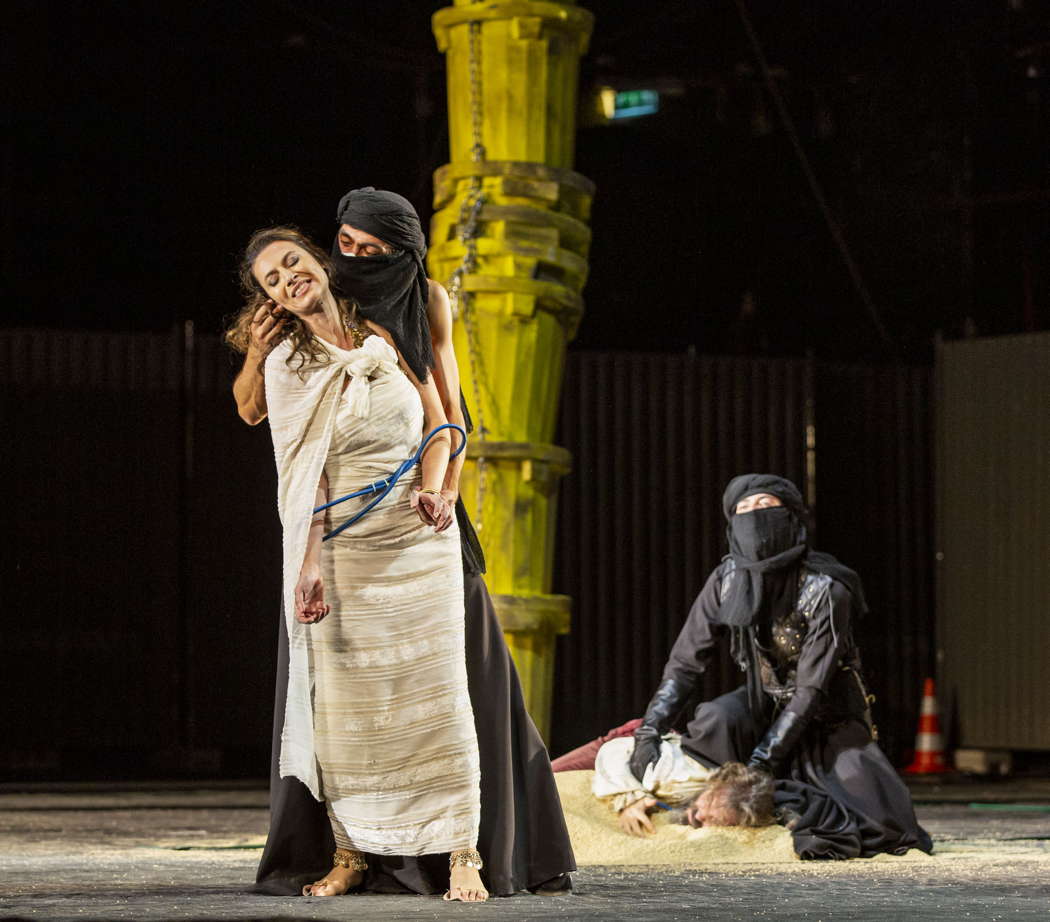 VIDEO PODCAST: Find out about composers from unusual places, including Gerard Schurmann, Giya Kancheli, Nazib Zhiganov and Nodar Gabunia, about singing in cars, and meet Jim Hutton from the RLPO and some of our regular contributors.
VIDEO PODCAST: Find out about composers from unusual places, including Gerard Schurmann, Giya Kancheli, Nazib Zhiganov and Nodar Gabunia, about singing in cars, and meet Jim Hutton from the RLPO and some of our regular contributors.
PROVOCATIVE THOUGHTS: 
The late Patric Standford may have written these short pieces deliberately to provoke our feedback. If so, his success is reflected in the rich range of readers' comments appearing at the foot of most of the pages.
- Ludvig Norman
- Alberto Zedda
- William Christie
- George Malcolm
- Martín Melitón Pablo de Sarasate y Navascués
- Edmund Rubbra
- Arthur Butterworth
- Intermusica
A Survival Strategy
GIUSEPPE PENNISI writes about the current music scene in Italy, touching on recent notable performances
A survival strategy, like that taught in the Marine Corps training centres - this is what the music sectors of several countries are longing for. Live music has to cope with Government restrictions on audience, seating and distancing both on stage and in the audience seating arrangements. In addition, subsidies are shrinking due to priorities given to other public spending such as the health sector and the social safety net addressed to job losers and enterprises facing bankruptcy as well as due to escalating public sector debts. Finally, many opera and concert goers are sheltering in place due to the pandemic. The decrease in disposable income does not augur well for several years after the end of the health crisis.
In Italy, on 15 October 2020, the Associazione Nazionale Fondazioni lirico-sinfoniche (ANFOLS) - the guild of the main opera houses - issued an alarmed and alarming statement: a 60 million euro box office contraction for 2021. They requested, of course, the Government to step in. This is highly unlikely. Moreover, it is impossible to program because there is a key uncertainty on seating capacity availability. Following a 13 October Order-in-Council, until 15 November, the operative regulation sets a seating capacity of a thousand for open-air performing arts and two hundred for inside performances. Theatres and concert halls have been working on a small print proviso: at the request of the Regional Government(s) and with seating arrangements approved by the public health authorities, the capacity can be expanded. To give an idea: in Rome the Santa Cecilia auditorium, with a capacity of nearly three thousand, is authorized to sell some eight hundred tickets and the Teatro dell'Opera, with a capacity of nearly two thousand, some six hundred tickets. In Bologna, the charming nineteenth century wooden architecture of the Teatro Comunale is shut; concerts are performed in a huge hall planned for major conferences and political meetings; the concert Madama Butterfly is being staged without the women's chorus as one of its members was found to be COVID-positive.
Prospects are not encouraging. In the Summer, only one contagion had been reported in the music sector, but only a few days ago in Bari the Teatro Petruzzelli had to suspend performances of Verdi's Falstaff due to ten cases of infection among musicians. There are rumours of other cases. The Teatro alla Scala had called for a press conference on 16 October to present its December-March program but cancelled it on the very morning when it was scheduled. Malignant whispers say the virus is circulating in the best-known Italian opera houses. On 16 October, a new Order-in-Council was approved. It affects theatres and concert halls. However the Prime Minister said, in a press conference, that the situation will be monitored in the next two-three weeks and then, if needed, new measures will be enacted.
However, when the going gets tough, the tough get going. Several Italian theatres are performing on a reduced capacity - eg La Scala had a series of successful performances of an all-stars concert version of Verdi's Aida. In Verona's Teatro Filarmonico a program of six symphonic concerts as well as a concert version of Verdi's Un ballo in maschera is about to start. In Rome, the weekend of 16-18 October featured the inauguration of the symphonic season of the National Santa Cecilia Academy and the debut of Mozart's Zaide, an incomplete opera never staged in the Italian capital. Because I have a lung condition, due to the pandemic, my doctors forbade me to have contact even with close relatives such as my only grandson, but HD television and radio provided a substitute, not for a fully-fledged review but for a report.
In the first part of the concert the chorus (led dy Piero Monti) and the symphonic orchestra of the Santa Cecilia National Academy, conducted by Antonio Pappano, performed Anton Bruckner's Te Deum, an ode to God in which the author uses voices and instruments to give solemnity to the religious content of the text. At the same time, through music, Bruckner gives strength to his faith, drawing on the musical heritage of the sacred tradition from Gregorian to Baroque. Mahler, who directed the Te Deum in Hamburg almost a decade after its composition, noted on its score: 'for angelic voices, men in search of God, tormented hearts and souls purified by fire'. In this rendering, the intention was to thank God for the end of the pandemic. Unfortunately, that very night the news arrived that on 16 October, the number of daily COVID-19 cases had been more than ten thousand. The chorus and the orchestra provided a very intensive reading of the Anthem.

Antonio Pappano conducting the orchestra and chorus of the Accademia di Santa Cecilia
In the second part, Antonio Pappano conducted Mahler's Das Lied von der Erde. This is a cycle taken from an anthology of Chinese poetry published in 1907 by the poet Hans Bethge, in which Mahler returns to reflection, accompanying all his work, on the meaning of life. Performed posthumously in Munich in 1911, six months after the composer's death, under the direction of Bruno Walter, Das Lied von der Erde is structured on both the symphonic form and that of the Lied. They merge into an impressive symphony for alto, tenor and orchestra. Pappano reads the score like Pierre Boulez and, before him, Bruno Walter did: very transparent but unemotional. As a result, the sense of suffering and the serene Zen acceptance of Das Abschied are more acute. German alto Gerhild Romberger and American tenor Clay Hilley performed very well; she was engrossing in Das Abschied. He was a real Wagnerian tenor, as required. The audience responded with applause and accolades.
Zaide is an unfinished opera most likely written by Mozart in 1780. In 1778 Emperor Joseph II was in the process of setting up an opera company for the explicit purpose of performing German operas. In Salzburg in 1779, Mozart began work on a new opera (now known as Zaide although Mozart did not give it such a title). It contains spoken dialogue; thus, it is classified as a Singspiel. Mozart composed only the arias and ensembles from the first two acts. Missing are an overture and the third act.
At the time, it was popular for operas to depict the rescue of enslaved Westerners from Muslim courts, since Muslim pirates were preying on Mediterranean shipping, particularly to obtain slaves for various purposes. This story portrays Zaide's effort to save her beloved, Gomatz. Mozart was composing for a German libretto by Johann Andreas Schachtner, set in Turkey, which was the scene of his next, completed rescue Singspiel - Die Entführung aus dem Serail. He soon abandoned Zaide, to work on Idomeneo, and never returned to the project. The work was lost until after his death, when Constanze, his wife, found it amongst his scattered manuscripts in 1799. The fragments would published in 1838; the first performance was held in Frankfurt on 27 January 1866, the 110th anniversary of Mozart's birth. Then, Zaide received critical acclaim. Nonetheless, the tender soprano air, 'Ruhe sanft, mein holdes Leben', is the only number that might be called moderately familiar.
In modern performances, Mozart's Symphonies No 26, or No 32, which were composed around the same time as Zaide - are often performed as an overture to Zaide. Completions of the opera may use a pastiche of Mozart's concert arias or, more popularly, music from Thamos, King of Egypt, also from the same period of Mozart's career.
The main issue is that Mozart is a very theatrical composer, but in Zaide there is very little theatrical action, also because the ending of the plot is totally unknown. I had seen and heard Zaide at the 2008 Aix-en-Provence Festival with stage direction by Peter Sellars. Even Sellars himself could not give life to the opera. Interpolated with Thamos' interludes, the performance lasted about an hour and a half. I concluded my review stating that a concert version of the best musical numbers would be a better proposition than a full staging.
This production is joint venture by the Rome Teatro dell'Opera with the four theatres of OperaLombardia. The set, a modern building site where construction is going on - a telling indication that the opera is uncomplete, is by Pasquale Grassi, the stage direction by Graham Vick and the conductor is Daniele Gatti. It is based on the adaption made about forty years ago at the Batignano Festival in Tuscany with staging by the then young Graham Vick and a British amateur company. Italian novelist Italo Calvino provided a plot (with a few different endings the audience could choose from). In between the musical numbers (in German language), a narrator tells the story. The difference between languages does not help. Neither does the lengthy and verbose narrator. With a twenty minute intermission, this production lasts two and a half hours.

A scene from Mozart's 'Zaide' in Rome. Photo © 2020 Yasuko Kageyama
Singers Chen Reiss, Paul Nilo, Juan Francisco Gatell, Markus Werba and Davide Giangregorio as the principals and Raffaele Feo, Luca Cervoni, Domingo Pellicola and Rodrigo Ortiz in secondary roles, were all very good, and the orchestra was effective.

Chen Reiss in the title role of Mozart's 'Zaide' at Teatro dell'Opera di Roma. Photo © 2020 Yasuko Kageyama
There was very warm applause, but it was not clear whether this was for the opera, the performers or for being in the opera house after so many months of lockdown.
Copyright © 19 October 2020
Giuseppe Pennisi,
Rome, Italy

FURTHER ARTICLES ABOUT COVID-19
FURTHER LIVE CONCERT AND OPERA REVIEWS


